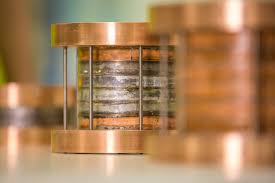
Breaking News
 $26M Frozen on Blockchain - With One Click
$26M Frozen on Blockchain - With One Click
 Italy are on national strike shutdown rejecting digital enslavement...
Italy are on national strike shutdown rejecting digital enslavement...
 The following U.S. states are currently using the rebranded "Reporty Homeland Security" so
The following U.S. states are currently using the rebranded "Reporty Homeland Security" so
 NATO Chief Urges Europe To Prepare For Long-Term World War With Russia, China, Iran & North Korea
NATO Chief Urges Europe To Prepare For Long-Term World War With Russia, China, Iran & North Korea
Top Tech News
 HUGE 32kWh LiFePO4 DIY Battery w/ 628Ah Cells! 90 Minute Build
HUGE 32kWh LiFePO4 DIY Battery w/ 628Ah Cells! 90 Minute Build
 What Has Bitcoin Become 17 Years After Satoshi Nakamoto Published The Whitepaper?
What Has Bitcoin Become 17 Years After Satoshi Nakamoto Published The Whitepaper?
 Japan just injected artificial blood into a human. No blood type needed. No refrigeration.
Japan just injected artificial blood into a human. No blood type needed. No refrigeration.
 The 6 Best LLM Tools To Run Models Locally
The 6 Best LLM Tools To Run Models Locally
 Testing My First Sodium-Ion Solar Battery
Testing My First Sodium-Ion Solar Battery
 A man once paralyzed from the waist down now stands on his own, not with machines or wires,...
A man once paralyzed from the waist down now stands on his own, not with machines or wires,...
 Review: Thumb-sized thermal camera turns your phone into a smart tool
Review: Thumb-sized thermal camera turns your phone into a smart tool
 Army To Bring Nuclear Microreactors To Its Bases By 2028
Army To Bring Nuclear Microreactors To Its Bases By 2028
 Nissan Says It's On Track For Solid-State Batteries That Double EV Range By 2028
Nissan Says It's On Track For Solid-State Batteries That Double EV Range By 2028
Tokamak Energy Has 24.4 Tesla High Temperature Superconducting Magnets...

The magnet is wound from REBCO (Rare earth – Barium – Copper Oxide) HTS tape. This conduction-cooled all-REBCO magnet achieved its peak field at 21K in a cold bore of 50 mm, which we believe to be record performance. In superconducting terms, 21K is a relatively high temperature. Additionally, the magnet is extremely robust, reliable and simple to manufacture. The engineers have been impressed by the defect tolerance of the coils and their response to a sudden loss of superconductivity, called a quench.
The achievement is an important milestone on the route to commercial fusion energy because high magnetic fields are necessary for tokamak machines to trap the hot fusion fuel, which is in the form of an electrically-charged gas called plasma. High temperature superconducting materials will facilitate the higher magnetic fields necessary for efficient commercial fusion reactors.
The progress of the HTS team has been faster than expected with milestones being hit well ahead of schedule (this milestone was scheduled for late 2020). The next step is to scale up these magnets into the configuration required for tokamaks.

 Carbon based computers that run on iron
Carbon based computers that run on iron

